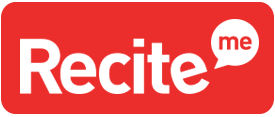NAGC works to support those who enhance the growth and development of gifted and talented children through education, advocacy, community building, and research

NAGC works to support those who enhance the growth and development of gifted and talented children through education, advocacy, community building, and research
 The February 2020 issue of Teaching for High Potential is available now for members
The February 2020 issue of Teaching for High Potential is available now for members
This month's subjects include: Praise & Encouragement, Number Talks, EdTech Science Trends, and more.
 Attend the Leadership & Advocacy Conference, March 17-18, 2020 in Alexandria VA to sharpen your advocacy and policy skills, visit your Congressional Representative and Senators, and learn how Federal policies are impacting gifted education.
Attend the Leadership & Advocacy Conference, March 17-18, 2020 in Alexandria VA to sharpen your advocacy and policy skills, visit your Congressional Representative and Senators, and learn how Federal policies are impacting gifted education.
Scott J. Peters
Nationally, students from African American, Latinx, and Native American families are underrepresented in gifted education by 43%, 30%, and 13% respectively (as of 2016). Students with disabilities and who are still learning English are also underrepresented by roughly 75%. Sadly, these rates of inequity are not new and have been documented since at least the 1970s. One potential barrier to successfully addressing this challenge is lack of awareness. The first step to solving a problem is understanding the current state of affairs. Gifted program coordinators or teachers are too often a one person show where they handle everything from program administration to direct instruction with their students. This leaves less time for proactive planning and reflective practice.
In an area where there are few easy solutions, one thing is now a lot easier. Racial, ethnic, language, and disability demographic data are now available for every school and district in the United States. This means that right now, you can go to the Office of Civil Rights data collection website and search for any school or district. From there you can see the exact demographics of their gifted population compared to the overall population. These data can then be used for professional development with staff or proactive planning and program implementation to try and mitigate this inequality.
A handout and a narrated video walk you through how to use this important resource. Use these resources at a team meeting, with a parent advisory council, or as you reflect on what your school is already doing, and what it could do differently to challenge these longstanding rates of disproportionality.
Scott J. Peters is a professor at the University of Wisconsin-Whitewater.
The views expressed herein represent the opinion of the author and not necessarily the National Association for Gifted Children.

National Association for Gifted Children
1331 H Street NW, Suite 1001, Washington, DC 20005

